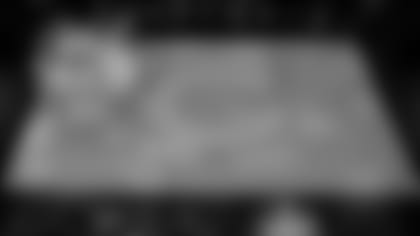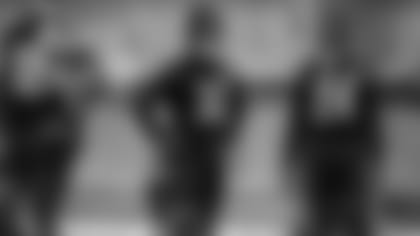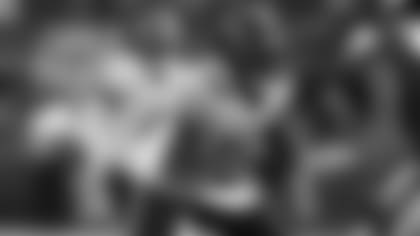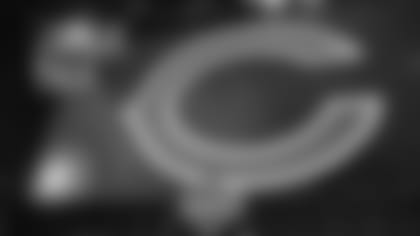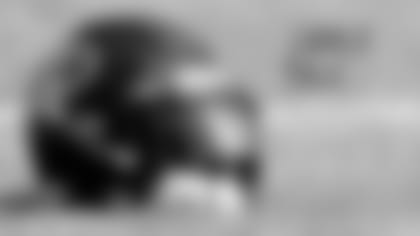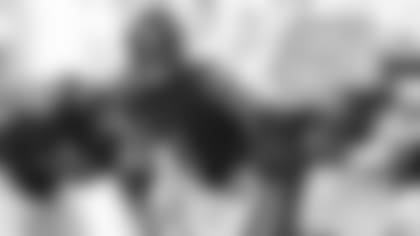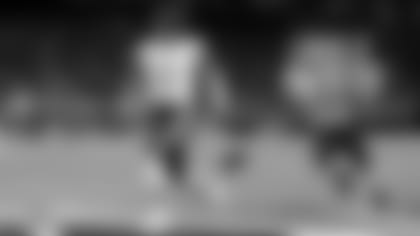Wondering about a player, a past game or another issue involving the Bears? Senior writer Larry Mayer answers a variety of questions from fans on ChicagoBears.com.
I know a lot of people are pointing fingers at the Bears offense and rightfully so. But what's wrong with the run defense? I can't remember the last time the Bears defense has been gashed on the ground like they've been in the last two games.
Darryl P.
Hammond, Indiana
I think there are multiple reasons the normally stingy run defense has struggled in back-to-back losses to the Raiders and Saints. The Bears certainly have missed their top defensive lineman, Akiem Hicks, who possesses the size and power to occupy blockers and make tackles at or behind the line of scrimmage. Hicks hurt his elbow on the first drive of the Oakland game and was placed on injured reserve. The Bears also have faced two teams that have excellent offensive lines. They fell behind early in both games as well, which allowed their opponents to keep pounding the ball on the ground. And lastly, the failure of the Bears offense to sustain drives has forced the defense back on the field again and again with little rest. The Bears run defense has allowed 320 yards in its last two games after yielding just 246 yards in the first four contests of the season.
Why didn't the Bears run the ball more against the Saints? I thought the goal is always to be balanced on offense and they threw 54 passes and had just seven rushes Sunday.
Dan K.
Oswego, Illinois
Coach Matt Nagy's main objective is not necessarily to be balanced on offense but to call the plays he feels will be most successful. Against the Saints, the running game struggled from the outset—mustering two yards on four carries with a lost fumble in the first quarter—while what little success the Bears did have on offense in the first half came via the pass game. On the offense's only scoring drive of the first half, all three first downs came on Mitchell Trubisky completions of 17 yards to Allen Robinson II on third-and-eight, 12 yards to Robinson on second-and-10 and three yards to Trey Burton on second-and-one. Here's how Nagy explained the pass-heavy attack: "Early on we were zero, one and two on our yards running the ball. It's really simple math. As a play-caller, when it's second-and-nine and second-and-10 and second-and-eight and you're moving the ball throwing it, you're getting first downs throwing it, that's what the objective ism to get first downs. I don't care if I have to throw the ball 60 times a game, if that's what's going to help us win a game, or if I have to run it 60 times, I don't care. I want productive plays. Then you come out in the second half and you want to be more balanced. They go down, they score and then we fumble first play. That's hard. And then before you know it, now you're down nine points and then it's double-digits and now all of a sudden you have to throw the ball every down because time matters."
Before Sunday, when was the last time the Bears recovered their own onside kick?
Raymond L.
Racine, Wisconsin
Cordarrelle Patterson's recovery of Eddy Piñeiro's onside kick Sunday against the Saints was the first by the Bears since last Dec. 2 when Daniel Brown recovered Cody Parkey's onside kick in an eventual 30-27 overtime road loss to the Giants. Brown's recovery came after Parkey's 21-yard field goal had drawn the Bears to within 27-20 with 1:13 left in the fourth quarter. The Bears followed by tying the game 27-27 on Tarik Cohen's 1-yard touchdown pass to Anthony Miller on the final play of regulation. By the way, there have been 23 onside kicks attempted so far this season and the one by the Bears versus the Saints is the only one that has been recovered by the kicking team.



